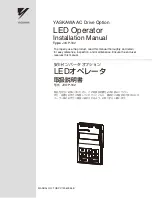
PSBSAP 20-Li B3
GB
│
IE
│
9
■
In second gear
(speed selector switch
6
in position 2),
you can reach a speed of approx. 2000 rpm for
carrying out drilling work.
Operation
Switching on/off
Turn on
♦
Press and hold the ON/OFF switch
8
to start
the tool. The LED work light
0
lights up when
the ON/OFF switch
8
is pressed lightly or
fully. This provides illumination of the work
area in poor lighting conditions.
Switching off
♦
Release the ON/OFF switch
8
to switch off
the tool.
Setting the rotational speed
Pressing the ON/OFF switch
8
lightly yields a low
speed. Increasing the pressure increases the speed.
NOTE
►
The integrated motor brake ensures that the
tool stops quickly.
Changing the direction of rotation
♦
Change the direction of rotation by pushing the
rotation direction switch
7
to the right or left.
Tips and tricks
Tip! How to do things correctly.
♦
Before operation, check whether the screw
or drill bit is correctly fitted, i.e. centred in the
chuck.
♦
Screw bits are labelled according to their di-
mensions and their shape. If you are uncertain,
always check first whether the bit fits tightly in
the screw head without any play.
Torque
♦
Smaller screws/bits can be damaged if you
set too high a torque or too high a speed.
Hard screw joints (in metal)
♦
Particularly high torques occur, e.g. in metal
screw joints when using drive sockets. Select
a low rotational speed.
Soft screw joints (e.g. in soft wood)
♦
Here, too, use a low speed to avoid damaging
the wood surface when it comes into contact
with the metal screw head. Use a countersink.
Small screws can be screwed directly into soft
wood without predrilling.
When drilling in wood, metal and other
materials, observe the following:
♦
Use a high speed for drill bits with a small
diameter and a low speed for drill bits with
a large diameter.
♦
Select a low speed for hard materials and
a high speed for soft materials.
♦
Mark the spot where you want to drill using
a centre punch or nail. Select a low rotational
speed when starting.
♦
Pull the rotating drill bit from the hole repeatedly
to remove dust and chips and clear the hole.
Drilling in metal
♦
Use a metal drill (HSS). For optimum results,
you should cool the drill bit with oil.
Metal drill bits can also be used to drill into
plastics. Start with a 3 mm drill bit and then
increase the size until the desired hole diameter
is achieved.
Drilling in brick
♦
Use a carbide-tipped masonry drill (max.
recommended drill diameter 16 mm).
Drilling in wood
♦
Use a wood drill with a lathe centre; for deep
holes, use an auger bit; for large-diameter
holes, use a Forstner bit.
Содержание 391011 2201
Страница 3: ...A ...
Страница 4: ...B 3 4 5 6 8 10mm 3 4 5 6 8 10mm 3 4 5 6 8 10mm 18 CONCRETE WOOD ...
Страница 41: ...PSBSAP 20 Li B3 30 DE AT CH ...
Страница 59: ...PSBSAP 20 Li B3 48 FR BE ...
Страница 75: ...PSBSAP 20 Li B3 64 NL BE ...
Страница 121: ...PSBSAP 20 Li B3 110 SK ...
Страница 167: ...PSBSAP 20 Li B3 156 IT ...
Страница 183: ...PSBSAP 20 Li B3 172 HU ...
















































